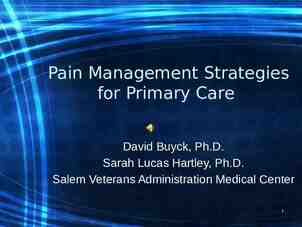Fall Protection Systems
52 Slides1.62 MB
Fall Protection Systems
This presentation will discuss: Why we need Fall Protection & The systems available to protect employees.
Why do we need fall protection?
.33sec./2 feet .67 sec./7 feet 1 sec./16 feet 2 sec./64 feet Anatomy of a Fall It takes most people about 1/3 of a second to become aware. It takes another 1/3 of a second for the body to react. A body can fall up to 7 feet in 2/3 of a second.
Statistics How Can the Numbers Focus Our Efforts?
Falls Falls are one of the leading cause of fatalities in the construction industry. In 2005 there where approximately 469 fatal falls, with the trend on the increase. The cost of care for injuries related to falls is a financial burden for the entire industry.
What Is Fall Protection? A series of reasonable steps taken to eliminate or control the injury effects of an unintentional fall while working at a height.
Philosophies of Fall Protection Stop/Prevent The Fall Catch The Fall Restraint/Positioning Fall Arrest Guardrails Safety Nets Warning Lines Controlled Access Zones Controlled Decking Zones Safety Monitors Catch Platforms
Planning for Fall Protection Best practice dictates that fall protection becomes an integral part of the project planning process, from constructability, to systems installation, to use and maintenance A project cannot be truly safe unless fall protection is incorporated into every phase of the construction process Planning will keep workers safe and minimize liability for all parties involved
Controlling Fall Exposures Select fall protection systems appropriate for given situations. Use proper construction and installation of safety systems. Supervise employees properly. Use safe work procedures. Train workers in the proper selection, use, and maintenance of fall protection systems. Evaluate the effectiveness of all steps
Fall Protection Systems and Components.
Methods of Roof Fall Protection Safety Monitors Guardrails and warning lines Fall Arrest
Flat/Low Slope 4:12 Slope or Less Beyond the Use of Guardrails, OSHA Allows the Use of – Warning Lines – Safety Monitors Recommended: – Guardrails or PFAS where feasible – Limited use of lines and monitors on flat roofs only
Roof Warning Lines Must be 6 feet back from edges Warning lines must be maintained at 34 - 39” above the working surface
Safety Monitor Oversees work outside the warning lines. Establishes the procedure to protect. Workers must receive special training. Use should be extremely limited
High Slope Over 4:12 Slope OSHA Mandates – Guardrails – Catch Platforms – Nets – Restraint Devices – Personal Fall Arrest Systems (PFAS)
Roof Guardrails Guardrails are a positive option on high slope roofs
Personal Fall Arrest Systems Anchorage Body Harness Connector Harnesses Caribiners Rope Grabs Beam Wraps Lanyards Positioning
Anchorages Must support 5000 lbs. per employee attached, – Or as part of a complete personal fall arrest system which maintains a safety factor of at least two – Or 3000 lbs. when using fall restraint or a SelfRetracting Lifeline (SRL, Retractable, or “yo-yo”) which limits free fall distance to 2 feet Should always be at or above D-ring height
Roof & Deck Anchors Permanent Anchors Wood Roof Anchor Metal Roof Anchor
Use of Eye Bolts Rated for loading parallel to the bolt axis. If wall mounted, the rating perpendicular to the axis must be good for 5,000 lbs. per employee Rated Needed
Girder Grip Anchorage Rings These attachments can be mounted through bolt holes on steel members. They are rated at 5,000 lbs. in all directions
Beam Clamps Beam clamps can make an effective anchorage when used properly, and with the correct lanyard TIGHT BEAM CLAMP PIN SET Be sure pin is inserted full length and clamp is tight.
Beware of potential for pulling off of coped ends on filler beams!
Horizontal Life Lines Provide maneuverability. Must be designed, installed and used under the guidance of a qualified person
Line Stanchions 5,000lb. The connection 3 ft. of the line stanchion to the flange must support the bending moment applied to the base. Bending Moment 15,000 ft-lb
Body (Harnesses) Need to be inspected frequently (daily before use by the worker, at least monthly by a Competent Person) Should never be modified Should be taken out of service immediately if defective or exposed to an impact
Harness Fitting Chest strap tightened at mid chest “D” ring between shoulder blades Proper snugness shoulder to hips Leg straps snug but not binding Butt strap supports the load Harness must be sized for the worker
Proper Adjustment Is Key “Rules of Thumb” Be able to reach your Dring with your thumb Maximum Four (flat) Fingers of Slack at the legs, straps as high as comfortably possible Ensure chest strap is across the chest/breastbone Have a buddy double check for twists, etc
Harness Pressure Points Spread load across butt strap and belt strap if on the harness Excess pressure here can cut blood flow to the legs Some studies have indicated permanent damage to the lower extremities when the worker hangs for more than twenty (20) minutes
Connectors (Lanyards) Should be inspected before each use Should not be tied back to themselves (unless specifically designed for such use) Should be worn with the impact absorber/shock pack at the d-ring Should have the appropriate clip for the intended anchorage points – Do not use large climbing/rebar/ladder hooks with “beamers”
Free Fall Distance How far a worker falls before shock absorbing or deceleration equipment begins to take effect – Affects both impact forces and total fall distance Anchorage point location in relation to D-ring height – Below the D-ring allows excessive falls – Above the D-ring minimizes free fall to less than 6’
Impacting Structures Below (Total Fall Distance) Consider: – anchorage point location in relation to D-ring height – lanyard length, – harness elongation, – shock absorber opening length, – body below D-ring – body viscosity (soft tissue injuries!)
Impacting Structures Below (Total Fall Distance) 6’ Lanyard Length 3.5’ Deceleration Device 5’ From D-Ring to Worker’s Feet 3’ Safety Factor (stretch, bounce, etc.) Total 18.5’ below anchorage point All distances are approximate, and shown for illustration only. This is why it is critical to maintain the safety factor distance!
Retractable Lifelines Very effective for vertical applications. Will normally lock up in 1 –2 feet, minimizing total fall distance and impact forces on the worker’s body
Do Not Hook Lanyards to Retractables! This worker is hooked to a retractable lifeline with his lanyard. This can cause hook failures and affect the locking capability of the retractable. The retractable should be attached directly to the “D” ring.
Positioning Systems Positioning Devices Provide Hands-free Work – Additional Fall Protection (tie-off) may be required to move or access
Fall Restraint Restraint Line Edge Fall restraint assumes the employee cannot reach the edge. He is basically on a short leash. If the employee could reach to the edge and fall over the edge, he must be in fall arrest.
Use of Restraint Cables Example of restraint cables used during deck anchoring. RESTRAINT CABLE
Wood Guardrail Construction Proper Height Midrails Toeboards Adequate Strength
Use of Braces for Guardrails 48" Install Mid Rail 38 - 48" Platform Brace can be used as a Top Rail.
Use of Braces for Guardrails Install Top Rail 48" 20 - 30" Platform Brace can be used as a Mid Rail
Braces as Guardrails The guardrails are in compliance using a 2x4 as one rail and the brace as the other rail. May not be the safest way
Use of Safety Nets Assumes the fall will occur Assumes adequacy of the system (or requires testing)
Nets
Sky Web
Planning For Rescue Worst-case Scenario?
When All Works!
Rescue Plan Put Into Motion
Safe
On The Ground And Still Alive!
Any Questions?

























































